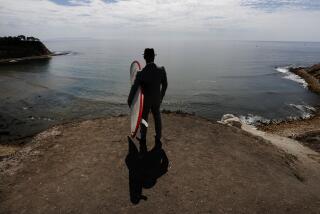Dispute Settled Over Property Near Lagoon : Environment: Pact allows for sale of site that Encinitas church hoped to develop. Open space or minimal housing is stipulated.
- Share via
A dispute over development near San Elijo Lagoon that pitted several Encinitas residents against a church has been settled after months of negotiations, it was announced Wednesday.
The agreement allows the sale of a 26-acre site for open space or minimal housing construction and was disclosed by the San Elijo Lagoon Conservancy, North Coast Presbyterian Church and the Sienna Canyon Homeowners Assn.
The accord ends a controversy that started last year when the church proposed using the land for a $6-million, 42,000-square-foot project that included an 1,100-seat church sanctuary, classrooms, recreation complex and youth sports playing fields.
Although the church eventually dropped that idea, the parties have been negotiating for five months to protect the environmentally sensitive land from other potentially extensive building plans.
“We’ve achieved significant protection--a buffer zone, wildlife corridor and a limit on development,” said Gregory Dennis, the conservancy’s executive director.
The property is south of Manchester Avenue, east of El Camino Real and next to the recently created Escondido Creek State Ecological Reserve.
After the development project fell through, the church wanted to recoup the money it spent on the property by selling it for development of 20 houses.
However, the agreement, which parties regard as a compromise, sets conditions for the potential development of 10 homes on large lots, or sale to an organization that would keep the land as open space.
“The significance of the agreement is it allows the church to be able to market the land,” said Gary Conner, executive director of North Coast Presbyterian Church.
He said the church “would be open” to either minimal residential development or selling the land for open space. Housing construction must be approved by the city of Encinitas and the California Coastal Commission.
“We’re interested in a timely sale,” he said, adding that several parties are interested. He declined to identify them, however.
Once the land is sold, the church intends to find other property on which to build a regional church for its growing congregation, which now numbers about 1,200. The homeowners association and the conservancy will help find the site.
Neighbors reacted vigorously when the church project was unveiled, protesting that the development would crowd the property with buildings, cars and worshipers.
Environmentalists were worried that the so-called “mega church” would threaten the lagoon and endangered bird habitat next to the property.
“It just didn’t work as a church site,” Dennis said.
Strong opposition from homeowners across Manchester Avenue damaged the proposal’s chances, but it was state action that caused the church to withdraw its development application.
The state spent $1.4 million to purchase 43 acres of riparian land separating the church site and the lagoon reserve. That changed the project’s environmental impact report and required a different configuration for the church facility.
The state’s action “was the biggest reason for us stopping our project,” Conner said. “The usable acreage we would have ended up with wouldn’t have been worth the time, effort and monies.”
Under the accord announced Wednesday, all the coastal sage scrub on the church property--habitat for the California gnatcatcher--will be preserved. Also, a wildlife corridor will be maintained as permanent biological open space.
More to Read
Sign up for Essential California
The most important California stories and recommendations in your inbox every morning.
You may occasionally receive promotional content from the Los Angeles Times.










